An eMTB is like a pair of shoes: if they don’t fit, you’ll be uncomfortable, you’ll develop blisters, and you won’t want to walk at all. It’s not only the frame size and the saddle that are important for the right fit, but also what you intend to use it for. You wouldn’t think of running through the woods in stilettos or crashing a gala party wearing mountaineering boots, would you? Before buying an eMTB, you should be able to answer the following thirteen questions.
What is your main use for an eMTB?
The great advantage of eMTBs is their versatility. Thanks to the powerful electric motor, the issue of efficiency plays a much smaller role than on bikes without electrical support. Even bikes with heavy tires and a lot of travel can handle steep climbs with ease. Nevertheless, you should be aware of how you primarily intend to use your eMTB. There are major differences regarding sitting position, riding comfort, and suitability for trail and everyday usage, as well as battery capacity, range, and weight.

As comfortable as a cruiser, as safe as an SUV
Are you going to use your eMTB to commute to work, to transport your shopping, and take rides through woodlands on machine-made paths? And will you be out and about in bad weather? In that case, you need a low-maintenance, robust eMTB with componentry suitable for everyday use. A hardtail, i.e. a bike without suspension at the rear, but with a suspension fork at the front, is the best choice. Options for mudguards, luggage racks, and lighting are important.
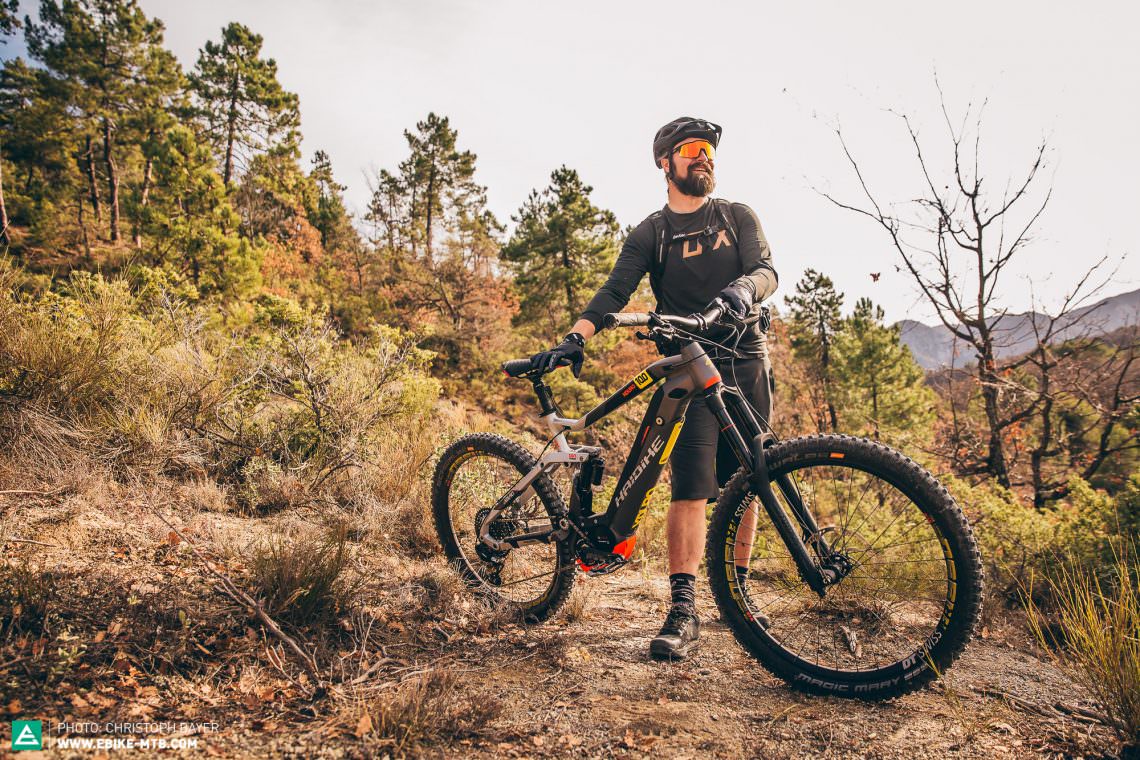
Gravel roads, single track, or alpine traverse?
Do you predominantly want to take your eMTB on leisurely rides through nature?
Do you want to ride on gravel roads or narrow single track? Do you want to experience the outdoors, discover new places, and be prepared for all eventualities? Then you need an off-road-capable eMTB with functional and reliable components and, of course, good handling. The battery capacity is also important, depending on whether you want to go on long day trips or just a short after-work ride. Our group test gives a detailed explanation of what to look out for.
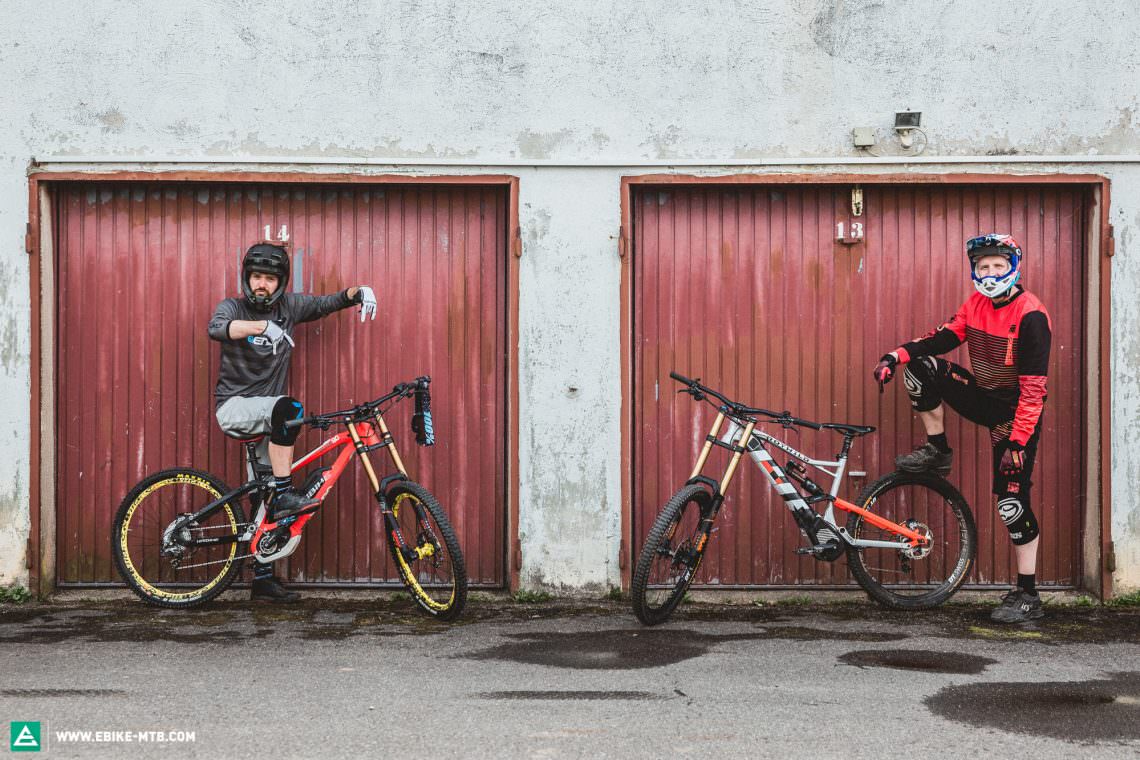
Two exciting eMTB alternatives for riders who are looking for the extreme.
Is your priority on weight rather than the strength of the motor and the amount of support it can offer? The FOCUS Raven² ushered in a new type of very light eMTB which appeals to endurance athletes rather than adrenaline junkies.
If you don’t want to stand in long queues at the lifts in bike parks or you want to learn the true meaning of “freeride,” eMTBs can be used as a replacement for shuttles or lifts in bike parks. Bikes offering 180 mm of suspension travel or more should be an especially exciting option for you if you’re willing to sacrifice a bit of climbing performance. Reviews of different bikes can be found on our review overview page.
How much should you budget for a good eMTB?
Quality comes at a price – the only exception is our free magazine. For a good bike, you should reckon on spending at least € 4,000. If you save money in the wrong place, you will often pay for it later, as inexpensive components wear out more quickly or break and then have to be replaced. Our group test will give you good guidelines to follow.
Full suspension or hardtail?
There’s no good reason to ride an e-powered hardtail unless, of course, you only ride on well-maintained roads or in the city. Besides being cheaper, eMTB hardtails offer no advantage over those with full suspension in off-road use. Regarding comfort, safety, traction, and versatility, fullies are unbeatable. Interestingly, bikes with less travel do not have more range and don’t climb better either – if the geometry is right, you will have the most fun on a bike with more than 130 mm of travel, and also have more traction on the uphills. And it doesn’t matter whether you use the bike as an SUV in the urban jungle or an alpine bike park. The classic mountain bike categories no longer count for eMTBs: the bigger, the better!
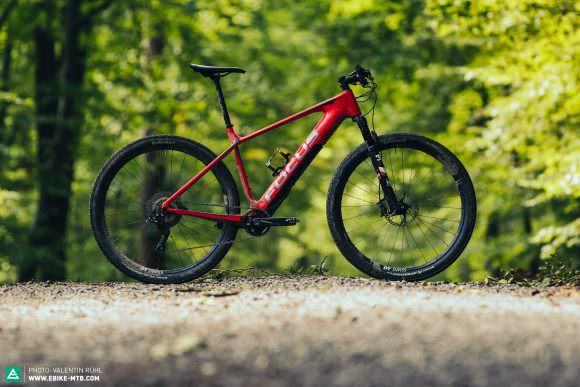

Which motor is the best?
For many people, the motor is still the heart of every ebike – but that’s not true. The overall concept of the bike remains crucial in determining comfort, safety, and fun. Nevertheless, there are big differences in the models, so an overview of the different motors and their strengths and weaknesses can be found here.
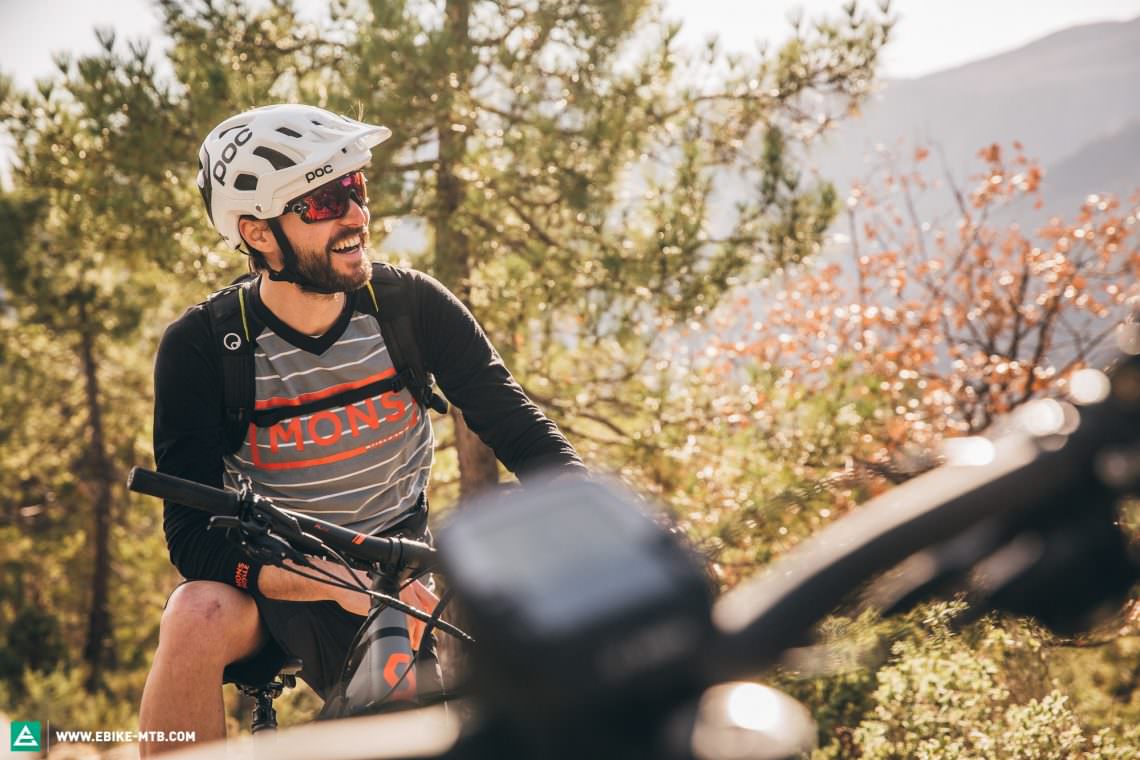
Which battery solution is right for me?
Before buying, you should find out where you can charge the bike. If there is no power socket in the vicinity of its future parking space, the battery must be removable. Some bikes have a built-in rechargeable battery and therefore won’t be suitable. Another advantage of removable battery packs is that if you have to carry the bike upstairs or if you occasionally want to transport it by car, it’s much lighter and easier to move around without the battery attached.
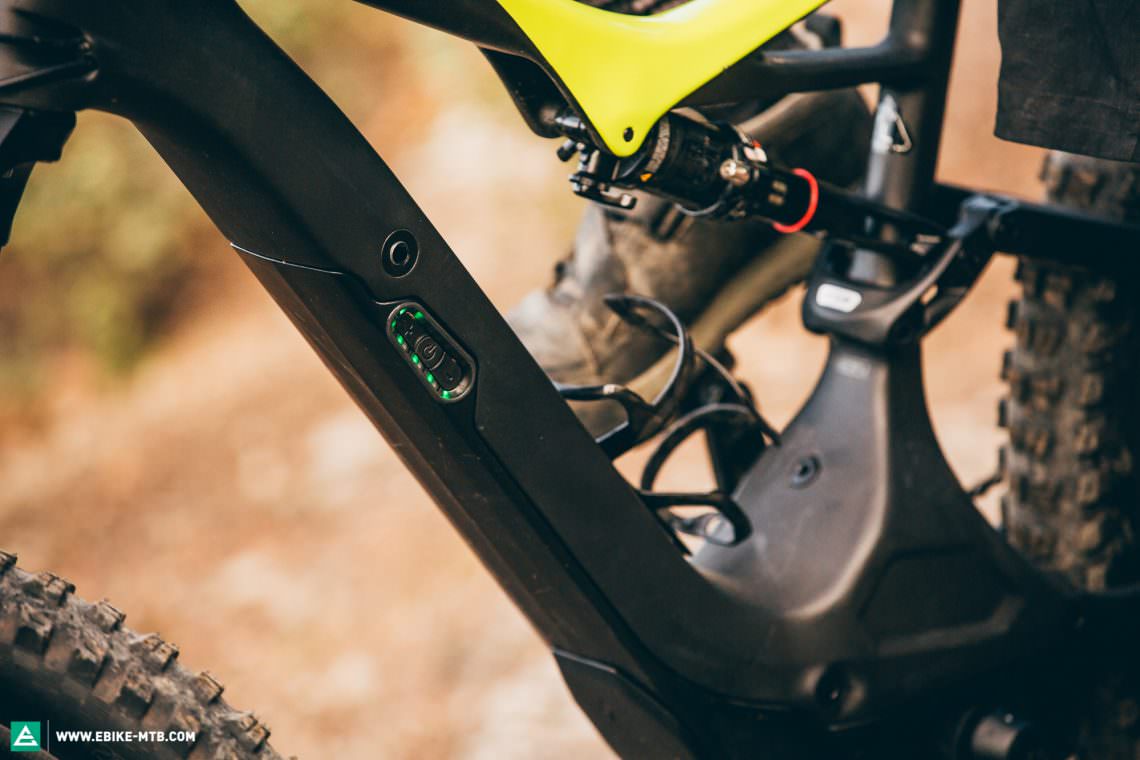
How much battery capacity do I need?
Current eMTBs have a battery capacity between 250 and 1,000 Wh. Are you going to take your bike on short after-work rides or daylong excursions? The battery capacity required depends on the length and altitude of the ride as well as the support level, rider weight, and many other factors. It is not possible to make a general statement about the battery capacity and range of an eMTB. Manufacturers’ statements on the range or the laboratory tests of other magazines should be taken with great caution, as they can deviate quite a bit from reality.
As a rough guideline: with a rider weight of 80 kg, a 500 Wh battery is sufficient for rides on hilly gravel and forest roads of about 40 km in tour mode, and in turbo mode, you will get about 30 km. On rides over flat land with isolated climbs you’ll be able to cover 50 km in tour mode. The engineers at Bosch have made a very good range calculator available on their website which allows you define a lot of individual parameters to obtain a good estimate of range. If you want to ride farther and longer by carrying a second battery in your backpack, it is best to use a bike with an external battery pack (for obvious reasons). The standard batteries are more compact and easier to carry. Some manufacturers such as BULLS, Haibike, FOCUS, and Riese & Müller also offer bikes which have the option of mounting an additional battery in or on the frame, increasing the battery capacity to between 750 -1,000 Wh.
Which bike and wheel size should I choose?
27.5+ has established itself as the standard for off-road eMTBs: 27.5″ wheels paired with 2.5″ to 3.0″ wide tires. This is shown in our group test, in which all bikes had at least 2.5″-wide tyres. For particularly tall riders, 29″ wheels are an exciting alternative. However, the tires should then also be at least 2.4″ wide. Some manufacturers are now opting for a combination of 29″ at the front and 27.5+ at the rear – a sensible combination of precise handling and high grip which will certainly be seen more often in the future.

Wide tyres are also advantageous for trekking bikes and eMTBs that are predominantly used on paved paths and gravel roads. They offer more grip, comfort, and braking traction. We recommend at least 2.1″ wide tyres even for trekking bikes – classic, narrow trekking tyres are dangerous and out of place!
Aluminium or carbon frames – which is better and safer?
The frame material is primarily a question of your budget. So far, carbon eMTBs cost on average € 1,000 or more than comparable aluminium models. The advantages of a carbon frame regarding riding performance are negligible. A good carbon frame can be stiffer and save 500 – 600 g in weight, but weight is not as important for eMTBs as it is for conventional bikes. Also, carbon allows manufacturers more freedom in frame design and thus allows for a more beautiful, integrated design (not to mention the bling-bling effect of many carbon bikes). The decision to purchase a carbon eMTB is, therefore, an emotional one.
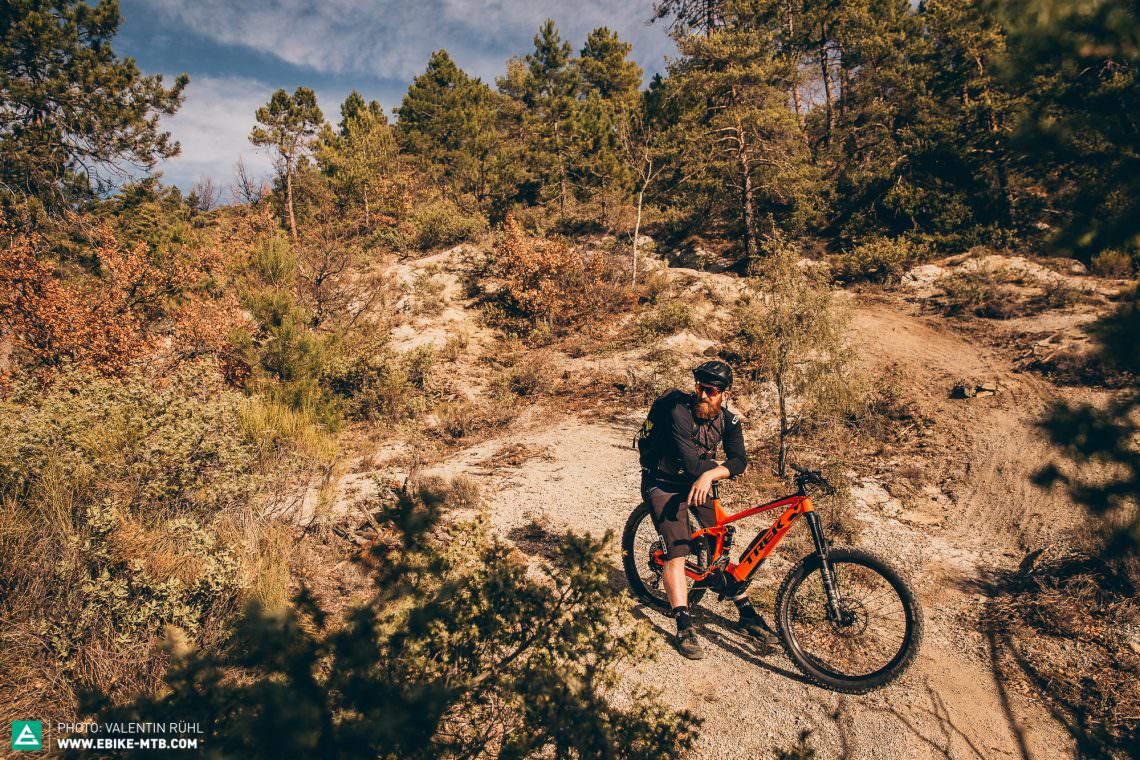
How many gears does an eMTB need?
The days when mountain bikes had 27 or even 30 gears are long gone. Modern bikes with and without electrical support only have one chainring up front and rely on drivetrains with 8 to 12 gears which shift better and cover a similar range. If the cassette’s range is too small, you’ll be missing an easier gear on steep climbs.
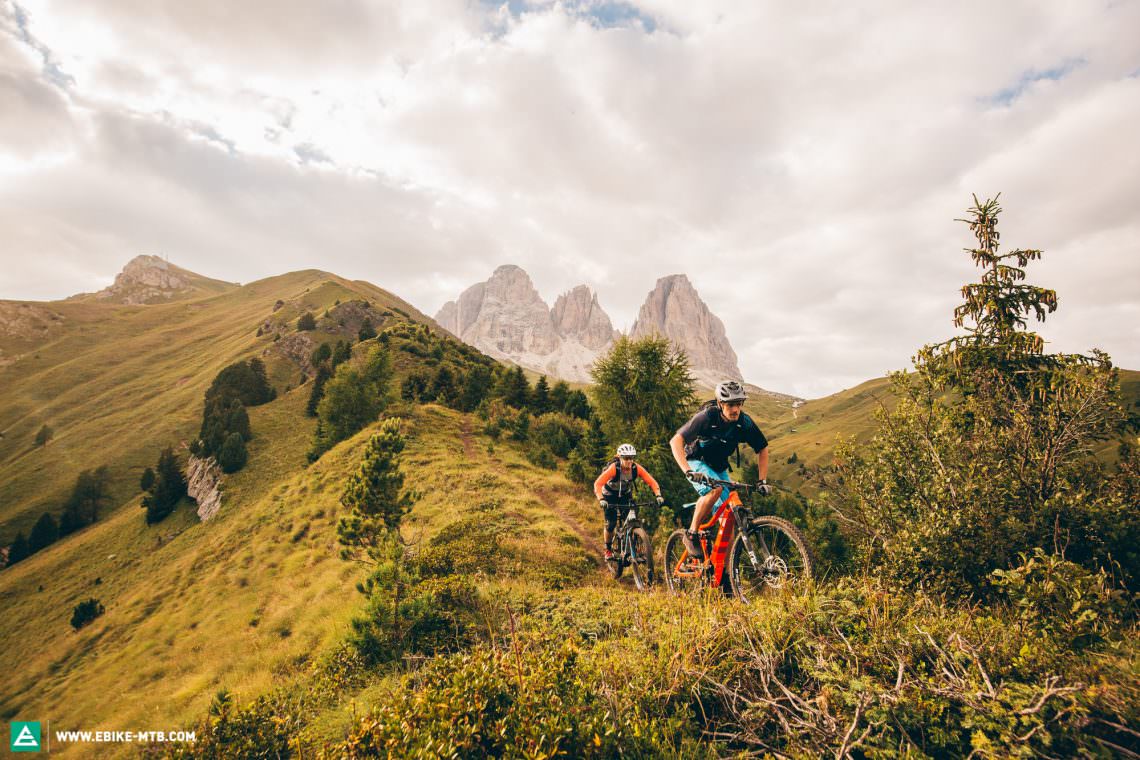
New or used?
This decision needs to be made on an individual basis. In general, eMTBs are exposed to significantly higher loads due to their increased weight and power output. Experience has shown that the drivetrain, brakes, and tyres are subject to high wear and tear. After less than 700 km, the chain often has to be replaced, and depending on the bike’s components, many other parts as well. Nevertheless, you can find bargains in the second-hand market by looking for relatively new bikes with flawless service history. Pay particular attention to the person you’re buying from, especially their know-how and the type of rider they are! Many eMTBs are ridden exclusively on the road or on gentle gravel roads, which limits wear and tear. We’ve got some more advice on
what to consider when buying a second-hand eMTB.
Where should I buy a new eMTB?
The question, in this case, should be “Where can I find the best service?”
A good bike dealer is not automatically a good ebike dealer. The trusted retailer should have ebike-specific know-how, offer individual bike tuning on purchasing, and provide good after-sales service in the event of future problems. Those looking for a bargain in a junk shop may lose a lot of money in the medium term due to expensive repairs. Additionally, you won’t have as much fun as you could if the bike is not properly set up. Good dealers should not only take care of maintenance, but also keep their customers informed about software updates for the electronic systems.
Can I buy an eMTB online?
More and more manufacturers will deliver eMTBs directly to your doorstep. However, while some deliver the bikes neatly packaged in a cardboard box, leaving the final steps (such as tuning the suspension and adjusting the contact points) to the customer, others drop the bikes off personally or use local service partners. It is definitely worth your while to carefully inform yourself beforehand.

What is the best eMTB? What is the most sensible componentry?
This point is especially important to us: trust in our reviews, as this is the easiest way to ensure you get a good bike. We promise. Our group tests are the industry’s most comprehensive and honest reviews – and we don’t mince our words with the big brands of the industry. Credibility, honesty, and transparency are our core values as a magazine. If we were to jeopardize this, we would not only lose our raison d’être, but we would make you unhappy too… and that would be a pity because eMTBing is meant to be a source of joy! If you consult other magazines besides ours to inform yourself about purchasing an eMTB, which you should, be sure to read between the lines and ask yourself why some points may NOT be mentioned. As far as our work is concerned, we are not completely independent, and we make mistakes, but we are honest!
One last tip: buying a bike is not enough!
Don’t worry – we don’t want to talk you into buying a second bike. However, we recommend getting the right gear: in addition to a proper helmet, sunglasses, a backpack, and a functional, stylish outfit (you don’t want to give those around you eye cancer), this includes the right pedals and suitable shoes. If you are going to use clipless pedals, it would be best if you’ve already had some experience with them. Trust us, that “shit-my-foot’s-not-coming-off-the-pedals” moment is a whole lot shitter with the weight of an eMTB between your legs. If you commute to work or ride in the vicinity of pedestrians, you should also invest in accessories such as decent lights, mudguards, and a discreet bell – yes, there is such a thing!
On that note, happy riding!
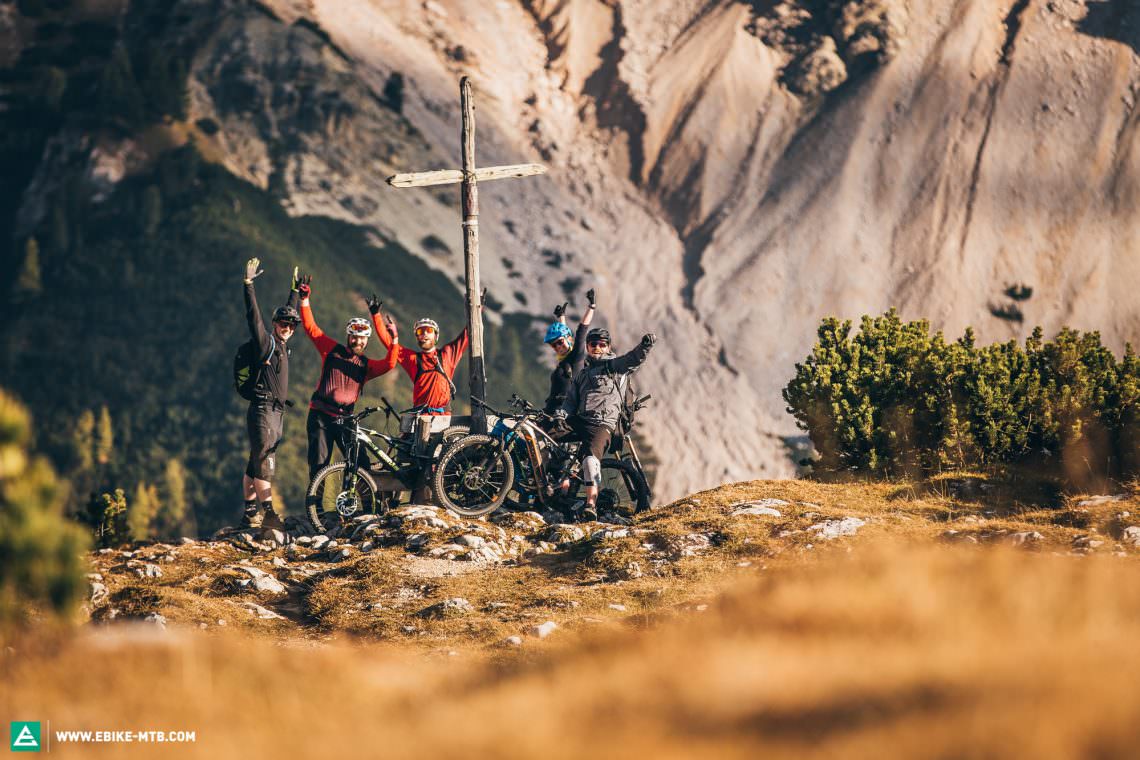
Did you enjoy this article? If so, we would be stoked if you decide to support us with a monthly contribution. By becoming a supporter of E-MOUNTAINBIKE, you will help secure a sustainable future for high-quality cycling journalism. Click here to learn more.
Words: Photos: Christoph Bayer, Valentin Rühl, Robin Schmitt









